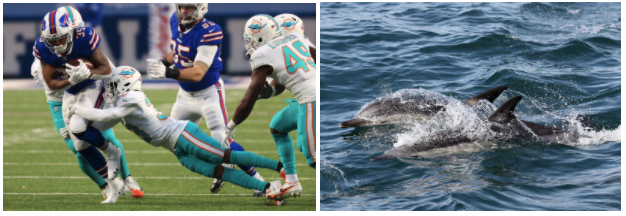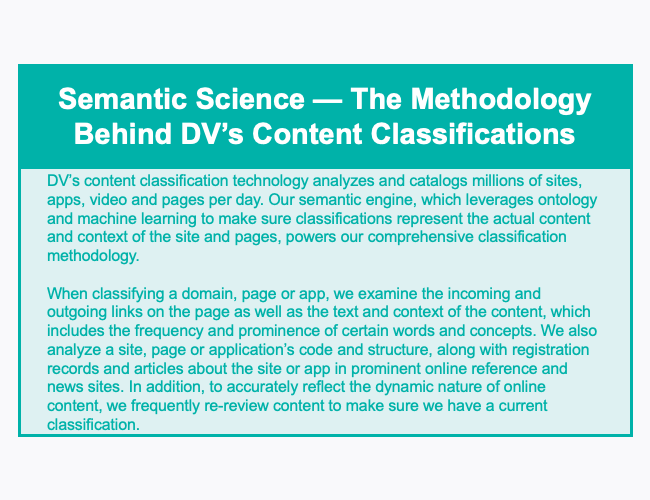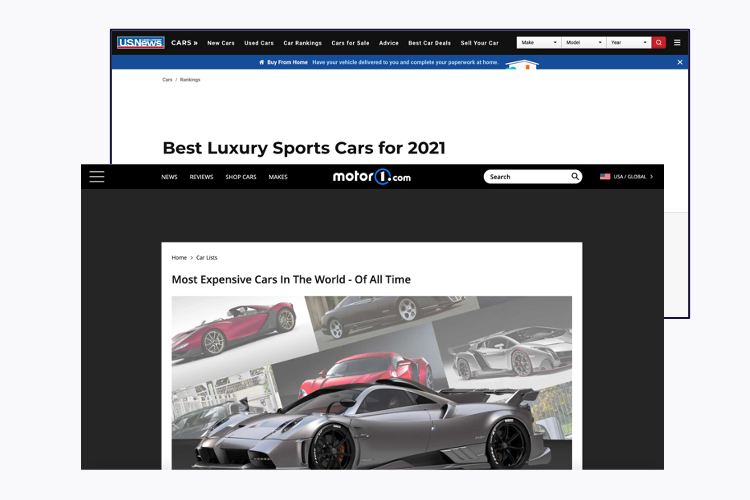 One of our global retail clients wanted to pause all media and reassess their brand safety strategy last spring, when the Covid-19 pandemic first began. Just a few months later, they were live — and they were realizing a significant increase across return on ad spend (ROAS).
One of our global retail clients wanted to pause all media and reassess their brand safety strategy last spring, when the Covid-19 pandemic first began. Just a few months later, they were live — and they were realizing a significant increase across return on ad spend (ROAS).
How does a client go from stopping their programmatic campaigns to increasing the value of their spend?
The answer is that what started as a brand safety and suitability conversation became a conversation about the relationship between brand safety/suitability, quality and performance.
Building Performance on a Foundation of Quality
Over the next five years, programmatic advertising will grow at nearly twice the rate of other digital marketing channels, according to Magna Global. In 2020, global advertisers spend $51 billion on programmatic advertising, and Magna Global estimates this number will reach $75 billion in 2023.

With programmatic leading the way for ad buys, it’s critical advertisers have a baseline foundation of quality. Once you are bidding on the cleanest highest quality inventory, you can then focus on powering performance and meeting — or exceeding — your key performance indicators (KPIs).
Four Steps to Verify Quality and Power Performance
After our global retail client wanted to pause all placements and re-evaluate their marketing strategy, we suggested additions to their strategy that could help them feel confident in their media placements. Once the new brand safety guidelines were in place, we talked about how to open up scale.
With our client now targeting quality inventory at scale, we could look at using cookieless solutions to improve performance. Importantly, though, these brand safety and performance solutions can only be helpful if they also increase efficiency and streamline processes. DV’s programmatic solutions are designed to do both.
The steps below outline how you can similarly improve KPIs by building a foundation of quality, opening up scale, increasing performance with privacy-friendly solutions and managing everything through a centralized location.

Make sure you have a nuanced, flexible brand safety and suitability toolkit. A one-size-fits-all approach to brand safety and suitability just doesn’t work in today’s complex programmatic ecosystem.

Custom Brand Safety Categories
Certain topics — pornography, hate speech, etc. — are broadly unsuitable and most, if not all, advertisers want to avoid these. But these are not the only topics that can be harmful to a brand, and each brand has specific needs when it comes to what’s suitable.
For example, a technology retailer may want to avoid content about the harmful effects of bluelight. An eyewear retailer may feel the exact opposite. And a CPG brand could be completely neutral. Custom brand safety categories help avoid content that is uniquely ill-suited for any individual brand or campaign.
Strategic Keyword Lists
A strategic keyword list helps brands avoid very specific topics, without cutting out large swathes of inventory. So a furniture retailer, for example, might want to avoid content about “Covid-19 layoffs” but not content about “Covid-19 home design.” Strategic keyword lists encourage taking a surgical approach, rather than a blanket approach, to brand suitability.

Over-reliance on keyword blocking can limit scale. So it’s important to remember that keyword lists work best for avoiding emerging negative content, increasing avoidance precision on specific topics and blocking brand-specific concerns. To learn more about keyword lists, check out our blog on demystifying keyword services by Matt McLaughlin, our COO.

When people think about brand safety, they are often concerned with limiting scale. But that’s a narrow view of brand safety and suitability. Brand safety and suitability is really about cleaning up your inventory pool to make sure you’re bidding on the best opportunities for your brand and its specific needs.
Brand safety and suitability is really about cleaning up your inventory pool to make sure you’re bidding on the best opportunities for your brand and its specific needs.
DV’s Authentic Brand Safety targeting aligns pre-bid targeting with post-bid brand safety. This helps advertisers avoid placing bids on impressions that, ultimately, are not going to meet their brand safety and suitability standards.


Contextual keyword targeting has been around for some time, and it’s an essential tool for advertisers to reach consumers that connect with their brand. In fact, more than two-thirds of consumers are more likely to engage with an if it’s relevant to the content they’re reading, according to DV/Sapio research.

Now, with stricter privacy regulations, such as GDPR and CCPA, the decision by browsers to sunset third-party cookies and Apple’s decision to stop using IDFAs, contextual targeting is an increasingly important part of any performance strategy.
The Issue With Traditional Contextual Targeting
Many DSPs, social networks and third-party solutions offer contextual targeting as part of their platform by allowing advertisers to define relevance with specific keywords or topics. But relying on keywords and topics to classify content lacks nuance. This approach can misidentify content as contextually relevant, which can lead to ads being served alongside irrelevant content.
The Next Generation of Contextual Targeting
DV’s contextual solutions use an ontological approach, which groups concepts based on their properties and relationships. How does it work? Well, without ontological logic in place, the keyword “dolphins” could yield articles about the marine mammals and the football team. Ontology looks at the context and relationships of words on the page to differentiate use-cases for identical words that have a different meaning.


Targeting the Right Audience With a Contextual Strategy
The Dolphins versus dolphins example is likely harmless, but imprecise keyword targeting can also yield brand suitability concerns. A snack brand, for example, may want to reach sports fans on content pertaining to “top Super Bowl snacks.” A health-focused CPG brand, though, may not want to be associated with content that suggests recipes for jalapeno poppers, wings, nachos and other traditionally unhealthy gametime food. These discrepancies can lead to spend that is not aligned with brand messaging.
With DV’s dynamic segments, advertisers can build custom categories that focus on granular, specific categories such as healthy snacks, or vacuum cleaners (instead of all appliances) or sports analysis (as opposed to sports in general). Categories can even be created to target content mentioning competitors and capture potential new customers.

DV’s custom contextual segments can also help advertisers reach consumers at different stages of their journey. Our in-market segments can be used to help reach users who are looking at reviews of the best sports cars for 2021 and those who are browsing an article about the most expensive cars of all-time.

Once an advertiser is targeting the best pool of inventory, DV’s Custom Contextual offering helps improve performance by reaching consumers where they’re most likely to be engaged and, therefore, receptive to your messaging.
Getting Contextual Targeting Right
DV’s Custom Contextual solution solves traditional contextual concerns by:
- Going beyond keyword analysis. We build targeting segments powered by our semantic science engine, which has a more sophisticated understanding of the page than traditional keyword targeting.
- Offering a wide variety of nuanced categories, including in-market and seasonal segments. Our in-market and seasonal segments can help you connect with your customers when they’re in later stages of the consumer journey.
- Empowering brands to define their own requirements with our dynamic contextual segments. Dynamic segments, which are offered as a managed service, let brands set their own parameters to build targeting that will reach the most hyper-relevant content.


This is all great, but you may be asking, is it complicated? The answer is no — any successful programmatic strategy needs to be seamless. Advertisers can automate the three steps above with easy governance with a programmatic targeting profile.
Through a programmatic targeting profile advertisers can:
- Specify content that you’d prefer to avoid by adjusting controls for mobile app and site lists, language tools, content classification categories, custom keyword lists and even custom brand safety categories.
- Change Authentic Brand Safety targeting settings and have that change automatically deployed to every DSP you use with hours. This allows for operational efficiencies so buyers can spend more time optimizing to reach performance metrics and less time on manual optimizations for brand safety.
- Seamlessly update custom contextual targeting segments across campaigns and DSPs.
What’s Next?
Once you have solved the success equation with quality and performance, you can start amplifying your formula with optimizations. In my next post, I’ll talk about how advertisers can use reporting insights to keep refining and improving performance strategies.
In the meantime, if you have any questions, please feel free to contact me directly. I’d be happy to chat.


